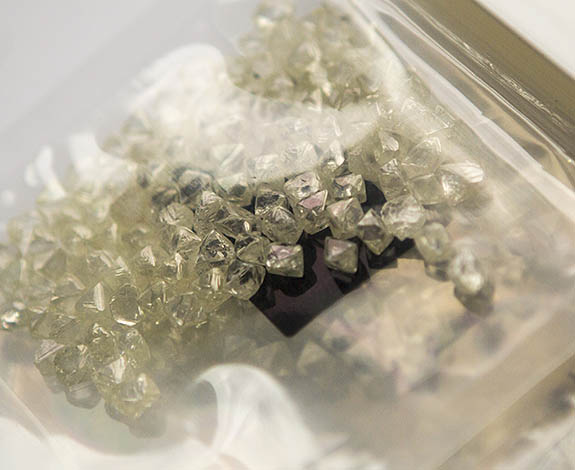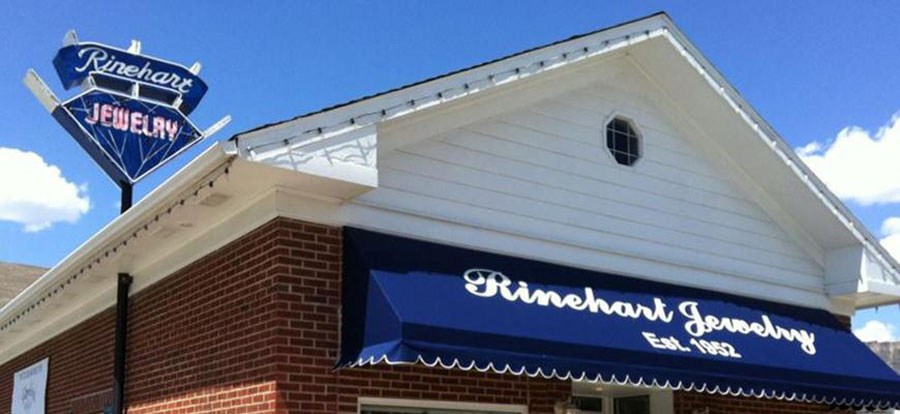October 26th, 2016
Many eons ago, the Orange River ferried precious diamonds from the center of South Africa westward all the way to the Atlantic coast — eventually scattering millions of carats across the ocean floor.

Today, five massive production vessels operated by De Beers — in partnership with the government of the Republic of Namibia — are recovering those gem-quality diamonds from a remote location more than dozen miles off the southwestern edge of the African continent.
The operation, called Debmarine Namibia, employs a 285-ton vacuum that scours the ocean floor 400 feet below sea level. A seabed crawler uses flexible hoses to bring diamond-bearing gravel to the surface. According to The Wall Street Journal, the mining operation yields a handful of diamonds for every 180 tons of material processed.

The publication described the fleet's high-security recovery rooms, where X-ray machines help separate the diamonds from worthless gravel. The concentrate is collected in jam-sized jars and taken to De Beers's land-based sorting operations via helicopter a few times each week.
When the undersea terrain is too uneven for the giant vacuum, the focus turns to the other ships, which use use drills to probe and extract material just 18 inches below the surface. There is no need to drill deeper because the diamonds are scattered just below the top layer of gravel.
A few decades ago, it would have been unfathomable for diamond companies to pursue deep-sea mining. But breakthroughs in technology are making this type of project viable and lucrative.
While sea-based diamonds account for just 4% of De Beers's annual production by carat weight, they account for 13% by value. This is because 95% of the diamonds pulled from the ocean floor are of gem-quality. This compares to just 20% of gem-quality diamonds coming from De Beers's top mine in Botswana. Some experts surmise that the diamonds in the ocean have endured such a pounding for so long that only the gem-quality ones could stay intact.

The Debmarine Namibia operation has yielded 16 million carats, so far. De Beers predicts that it will take about 50 years to "mine out" the licensed area that covers 2,300 square miles. It starts about 3 miles offshore and extends seaward 10 to 20 miles.
De Beers has aggressively invested in its sea-based operations. In August, the company added to its fleet the SS Nujoma, a $166-million exploration and sampling ship.
Credits: Images courtesy De Beers. Map by GoogleMaps.com.

Today, five massive production vessels operated by De Beers — in partnership with the government of the Republic of Namibia — are recovering those gem-quality diamonds from a remote location more than dozen miles off the southwestern edge of the African continent.
The operation, called Debmarine Namibia, employs a 285-ton vacuum that scours the ocean floor 400 feet below sea level. A seabed crawler uses flexible hoses to bring diamond-bearing gravel to the surface. According to The Wall Street Journal, the mining operation yields a handful of diamonds for every 180 tons of material processed.

The publication described the fleet's high-security recovery rooms, where X-ray machines help separate the diamonds from worthless gravel. The concentrate is collected in jam-sized jars and taken to De Beers's land-based sorting operations via helicopter a few times each week.
When the undersea terrain is too uneven for the giant vacuum, the focus turns to the other ships, which use use drills to probe and extract material just 18 inches below the surface. There is no need to drill deeper because the diamonds are scattered just below the top layer of gravel.
A few decades ago, it would have been unfathomable for diamond companies to pursue deep-sea mining. But breakthroughs in technology are making this type of project viable and lucrative.
While sea-based diamonds account for just 4% of De Beers's annual production by carat weight, they account for 13% by value. This is because 95% of the diamonds pulled from the ocean floor are of gem-quality. This compares to just 20% of gem-quality diamonds coming from De Beers's top mine in Botswana. Some experts surmise that the diamonds in the ocean have endured such a pounding for so long that only the gem-quality ones could stay intact.

The Debmarine Namibia operation has yielded 16 million carats, so far. De Beers predicts that it will take about 50 years to "mine out" the licensed area that covers 2,300 square miles. It starts about 3 miles offshore and extends seaward 10 to 20 miles.
De Beers has aggressively invested in its sea-based operations. In August, the company added to its fleet the SS Nujoma, a $166-million exploration and sampling ship.
Credits: Images courtesy De Beers. Map by GoogleMaps.com.


